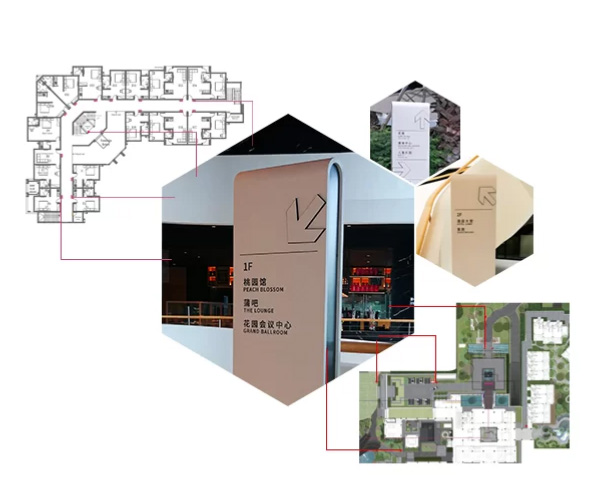Wayfinding Design

Ürün tanımı
Wayfinding design is the practice of creating systems that help people navigate and orient themselves in physical environments. It involves the strategic use of signs, maps, symbols, colors, and other visual cues to guide individuals from one point to another, making it easier to find destinations within complex spaces such as airports, hospitals, shopping malls, and urban areas.
Key Elements of Wayfinding Design
Signage: Signs are the most visible and direct form of wayfinding tools. They include directional signs, informational signs, identification signs, and regulatory signs.
Maps: Static or interactive maps provide an overview of a space, showing the relative location of key areas and routes.
Symbols and Icons: Universally recognized symbols (e.g., restroom, elevator, exit) transcend language barriers and quickly convey essential information.
Color Coding: Different colors can be used to designate specific areas or pathways, making navigation more intuitive.
Environmental Graphics: Large-scale visuals, murals, or patterns integrated into the architecture to aid navigation and enhance the aesthetic appeal of the space.
Landmarks: Distinctive architectural features or art installations that serve as reference points within the environment.
Digital Technology: Interactive kiosks, mobile apps, and digital signage provide dynamic and up-to-date navigation assistance.
Principles of Effective Wayfinding Design
Simplicity: Information should be clear and concise, avoiding clutter that can confuse users.
Consistency: Uniform design elements (fonts, colors, symbols) across all wayfinding tools create a cohesive system.
Visibility: Signs and other wayfinding tools should be easily visible and located at key decision points.
Legibility: Text and symbols should be large enough to read from a distance, with high contrast for easy viewing.
Predictability: The system should guide users in a logical sequence, with signs placed where decisions need to be made.
Redundancy: Multiple wayfinding elements (e.g., signs, floor markings, maps) should be used to reinforce messages and aid diverse user needs.
Applications of Wayfinding Design
Airports: Guiding passengers through check-in, security, gates, baggage claim, and exits.
Hospitals: Helping patients and visitors find departments, clinics, and amenities quickly and with minimal stress.
Shopping Malls: Directing shoppers to stores, restrooms, food courts, and exits.
Universities: Assisting students, staff, and visitors in navigating campuses, finding classrooms, libraries, and administrative offices.
Urban Areas: Providing direction and information in city centers, parks, and public transportation systems.
Corporate Campuses: Ensuring employees and visitors can find offices, meeting rooms, and facilities easily.
Wayfinding design is an essential aspect of creating navigable and user-friendly environments. By employing a mix of signs, maps, symbols, and digital tools, wayfinding systems facilitate easy and efficient navigation, enhance user experience, and contribute to the overall functionality and aesthetics of a space. Effective wayfinding design is about understanding the needs of users and creating clear, consistent, and intuitive navigation aids that guide them seamlessly through their journey.

